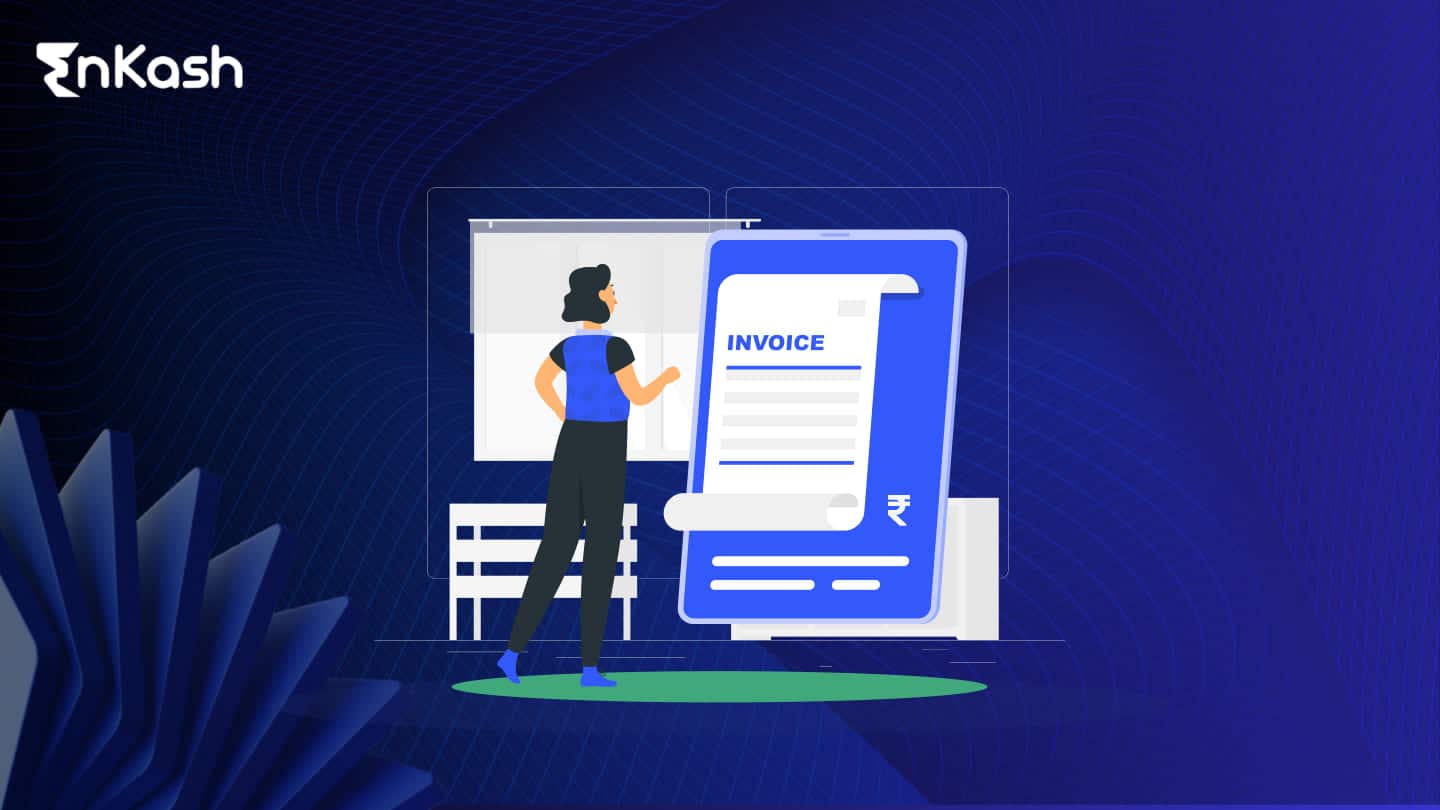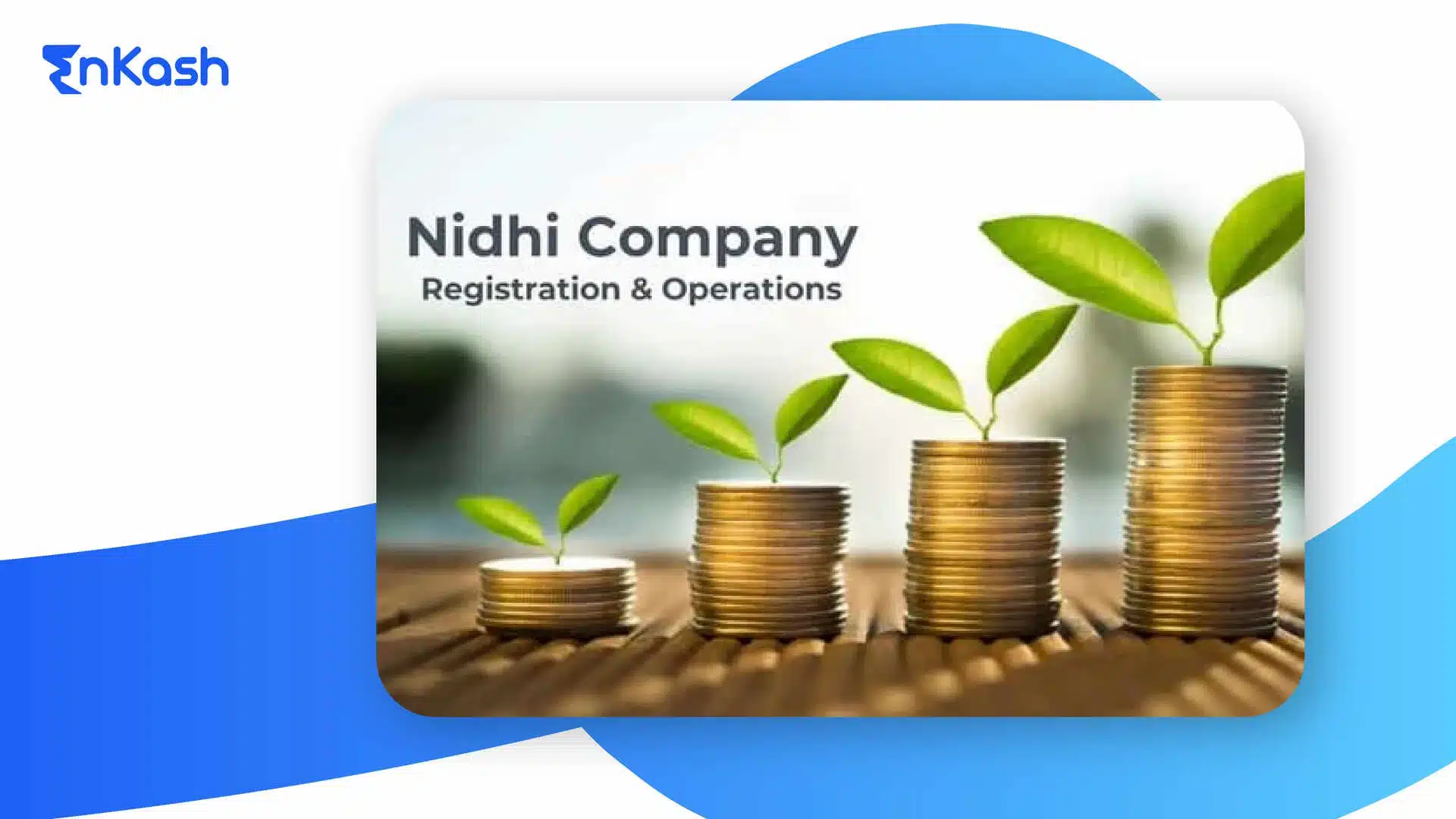A Goods and Services Tax (GST) invoice is a document issued by the supplier to the recipient that contains all the details of the supply made during the sale of any goods or services. It is a mandatory document for every business under the Indian GST regime. A GST invoice contains important information such as the name and address of the supplier, the name and address of the buyer, the description of goods or services provided, and the amount of tax payable. Issuing an invoice in the proper format helps in collecting the correct amount of tax, claiming input tax credit, and avoiding penalties for non-compliance. There are certain GST invoice rules for the format, timing, and other aspects of invoice issuance. The government has recently started using e-invoicing as a method of shifting business transactions to the GST regime.
Introduction
An integral component of the modern tax system, the Goods and Services Tax (GST) was introduced in India on the 1st of July, 2017. This value-added tax has replaced a few indirect taxes that were levied by states and the central government. Every business registered under GST is obligated to fulfil a variety of GST compliance requirements. One such requirement is the issuance of a GST invoice.
Every transaction where the seller supplies goods or services to the buyer must be recorded in a GST invoice. This invoice can be physical or digital and must contain all the information regarding the rate and valuation of the tax under GST.
So, for both the buyers and sellers, generating a compliant GST invoice is important. This invoice is used to collect the correct amount of tax and pay it to the government, thus enabling the buyer to claim tax credits. If you fail to issue a proper invoice, then you can be penalized. That’s why generating a GST invoice is a compliance obligation for all GST-registered businesses.
The blog will address what a GST invoice is, certain provisions that govern its issuance, GST invoice format, how to make a GST bill, and the significance of e-invoicing in helping businesses.
Also Read: GST Registration Requirements
What is a GST Invoice?
A GST invoice is a commercial document issued by a supplier to a recipient containing the necessary information required for the transaction. It includes the details of the supply made, the name and address of the supplier and recipient, the quantity and unit price of the goods/services supplied, the tax amount, etc.
All registered taxpayers are required to issue a GST invoice for every sale of goods or services by them. The invoice is important not only because it details the description of goods or services sold but also because it clearly breaks up the tax charged on the supply – whether Central GST (CGST), State GST (SGST) or Integrated GST (IGST).
Types of Invoices under GST
Different types of invoices can be issued depending on the nature of the transaction:
- Tax Invoice
- Bill of Supply
- Credit Note
- Debit Note
Key Elements of a GST Invoice
A GST invoice must contain specific mandatory details to be considered valid. These include:
- Supplier’s information (Name, address, and GSTIN)
- Buyer’s information (Name, address, and GSTIN)
- Invoice Number
- Date of Invoice
- Description of Goods/Services
- HSN Code or SAC Code
- Tax Details
- Total Amount
GST Invoice Rules
To comply with GST, a business must maintain a certain standard while raising a GST invoice. The rules are prescribed by the government and must be followed by all registered taxpayers. Non-compliance with the GST invoice rules can lead to penalties, so every business is expected to be aware of the rules.
Overview of GST Invoice Rules
- When to Issue a GST Invoice
The issuance of a GST invoice is dependent on the nature of the supply, whether it is for goods or services:- For goods, the invoice must be issued either before or at the time of removal of goods for supply (in case of transport) or before delivery of goods.
- For services, the invoice must be issued within 30 days from the date of supply of services. If the supplier is a bank or financial institution, the invoice must be issued within 45 days from the date of supply.
- Mandatory Information on GST Invoice
A GST invoice is an official document that must contain certain information if it is to be seen as valid. These details are specified by the GST regulations, and the customer has to provide them compulsorily:- Name, address, and GSTIN of the supplier and recipient (if registered).
- A unique invoice number that follows a consistent numbering format.
- Date of issue.
- Description of the goods or services, quantity (for goods), and unit of measure.
- Applicable HSN or SAC code.
- The total value of goods or services supplied.
- The total amount of the invoice, including GST.
- Rate of tax (CGST, SGST, IGST, UTGST) along with the taxable value and the amount of tax charged for each type of tax.
- Numbering of Invoices
The invoice number is to be unique and assigned consecutively. The numbering format must be preset and structured following a predefined business process, which guarantees traceability. The number is not to be repeated and does not change during a financial year. The business can prepare its numbering formats, provided that consecutive numbering is maintained. - Time Limit for Issuing a GST Invoice
As per the GST invoice rules, there are specific deadlines for issuing an invoice:- For goods: At or before the time of delivery or removal of the goods.
- For services: Within 30 days from the date of completion of the service. For insurance companies and financial institutions, the timeline is 45 days.
- This GST law imposes penalties on you if you do not send an invoice during these time periods.
- Number of Copies of GST Invoices
According to the nature of the supply (whether goods or services), the number of invoice copies differs.- Goods: 3 copies are required – Original for the buyer, Duplicate for the transporter, and Triplicate for the supplier.
- Services: 2 copies are sufficient – Original for the recipient and Duplicate for the supplier.
Consequences of Non-Compliance with GST Invoice Rules
If you do not comply with the GST invoice rules, you will get penalized. The GST penalties are as follows:
- A penalty of ₹10,000 or the amount of tax evaded, whichever is higher, for issuing an incorrect or improper invoice.
- If an invoice is not issued or it is not issued within the prescribed time, interest on late tax payments or other penalties for more serious non-compliance may be charged.
Businesses must follow the GST invoice rules to avoid penalties and keep the flow of input tax credits smooth. Also, it makes it easy for the supplier and buyers to keep track of their tax obligations.
GST Invoice Format
An invoice has to be created in a prescribed format to conform to the requirements of the Goods and Services Tax (GST) regime. The layout of an invoice and the details it contains are of utmost importance to ensure that the invoice created is in a readable format that facilitates tax compliance and record keeping.
A company can, however, customize invoices to suit its branding. However, the invoice must have a standard GST invoice format that contains mandatory details.
Breaking Down the GST Invoice Format
The GST invoice is divided into separate sections to clearly and transparently understand the transaction. The following are the essential parts of the invoice:
Supplier Information
Name, address, and GSTIN of the supplier. This helps identify the seller and link the invoice to the correct GST registration.
Invoice Number and Date
Every GST invoice requires a unique, sequential invoice number that will be in the format prescribed by the GST law.
The invoice date is crucial to indicate when the transaction took place and, therefore, the deadline for declaring and paying taxes.
Recipient Information
It includes – Name, address and GSTIN of the recipient (buyer). If you are an unregistered person under GST, then you just have to fill in the name and address of the recipient. In the case of B2B transactions, the recipient’s GSTIN is necessary to claim ITC.
Description of Goods/Services
You need to clearly describe the goods or services you offer. If it’s about goods, you need to mention a quantity, a unit of measurement, and a price per unit. If it’s about services, you need to describe the service and the total value.
HSN/SAC Code
Goods are assigned HSN (Harmonised System of Nomenclature) codes, while services are assigned SAC (Services Accounting Code) codes. The purpose of these codes is to ensure that the right GST is applied to the goods or services.
Tax Details
The GST invoice format needs to give a complete breakdown of the types of GSTs applied to the transaction. For most transactions, it includes:
- CGST (Central Goods and Services Tax)
- SGST (State Goods and Services Tax) for intra-state supplies.
- IGST (Integrated Goods and Services Tax) for inter-state supplies.
The rate of tax and amount charged under each category must be clearly mentioned.
Total Amount Payable
This section should specify the total amount of the goods or services, the applicable taxes, and the complete amount payable by the buyer. Thus, the buyer knows the exact amount of the payment, including both the tax components.
Payment Terms and Due Date
Businesses like to put in the payment terms and the date by which they expect payment reflected in the invoice (the invoice date). This sets a payment schedule for the buyer.
Read More: Difference between CGST SGST and IGST
GST Bill Format for Different Businesses
The GST bill format differs from business to business and can differ from transaction to transaction. Though the basic format stays the same, due to the industry’s requirements, there can be changes in the invoice format.
Customizing the GST Bill Format for Your Business
Businesses across different industries often need to tailor their GST bill format to better suit their operations.
Retail Businesses
The retail GST bill format typically includes:
-
- Product descriptions, HSN codes, quantities, and unit prices.
- Discounts (if applicable) for promotional offers.
- Total amount payable, including GST breakdown.
For retail businesses that handle a large number of small transactions, the law allows for simplified invoices for transactions of up to ₹200. These simplified invoices don’t require the buyer’s GSTIN or a detailed breakdown of goods and taxes.
Also Read: GST State Code List
Service-Based Businesses
Normally, service providers, such as a consultant, a contractor, a freelancer, etc., include invoices in their bills, which are service-oriented.
- Service description, SAC codes, and the duration or quantity of service provided.
- The applicable GST rates and the total amount charged for services.
- Payment terms, as services might bill at variable payment schedules based on milestones or time-based work.
E-Commerce Businesses
For e-commerce operators who supply goods or services through an electronic facility or platform, the GST bill format should also contain the following details:
- The platform’s GSTIN (if applicable) and the supplier’s GSTIN.
- The unique Invoice Reference Number (IRN) if e-invoicing is mandatory.
- Information on inter-state or intra-state sales and corresponding tax calculations (CGST, SGST, or IGST).
Manufacturing and Wholesale Businesses
Bulk orders are common for businesses that are involved in manufacturing or wholesale distribution. The GST bill format for these businesses should allow for the documentation of more quantity and detailed descriptions of the products. The essential parts are:
-
- Detailed HSN codes, quantity of goods, and unit prices.
- Delivery details, including transportation charges (if applicable).
- Any applicable trade discounts or bulk order discounts.
Format for Small Businesses
Small businesses with an annual turnover of less than ₹20 lakh (for services) or ₹40 lakh (for goods) are exempt from GST registration though many opt to register voluntarily to claim input tax credit and submit financial statements that raise their credibility. The GST bill format for such businesses is fairly straightforward:
- Supplier and buyer information.
- Details of goods or services with applicable HSN/SAC codes.
- Tax details and total value of the transaction.
Small businesses registered under the Composition Scheme thus issue a Bill of Supply rather than a tax invoice, as they are not allowed to charge GST directly on their bills. In this case, the details of the tax are not mentioned on the invoice, but the words ‘composition taxable person’ are.
How to Make a GST Invoice
By providing a well-structured invoice, not only can businesses comply with legal requirements and tax obligations, but they can also help their buyers claim their tax credits easily. Here is a step-by-step guide on how to make a GST invoice.
Start with Basic Information
Supplier’s Information: The first section of the invoice should include the name, address and GSTIN (Goods and Services Tax Identification Number) of the supplier. All these details are mandatory and must be mentioned at the top of the invoice.
Invoice Number and Date: The invoice must have a unique, sequential number that adheres to the format you’ve set for your business. The date of the invoice must also be included, as it affects tax reporting and filing deadlines.
Add Buyer’s Information
For B2B transactions, the name, address and GSTIN of the buyer must be mentioned as he is eligible for ITC on the transaction. For B2C sales, while the name and address of the buyer can be mentioned, the buyer’s GSTIN is not required.
Describe Goods or Services Provided
Describe the goods or services supplied in detail. Record the quantity, unit of measure, and unit price if it is goods. If it is a service, give a detailed description of the service supplied and the amount charged.
Include HSN/SAC Codes
According to the nature of goods or services, mention the appropriate HSN (Harmonized System of Nomenclature) or SAC (Services Accounting Code). These codes help classify goods or services under GST and determine the tax rates applicable to that particular category. If the right codes are not mentioned, compliance issues may arise.
Specify the GST Rates
Depending on whether the transaction is intra-state or inter-state, specify the appropriate tax rates:
-
-
- CGST and SGST for intra-state sales
- IGST for inter-state sales
-
The percentage of GST levied on each item or service needs to be clearly stated, as well as the total amount of tax charged under each heading.
Calculate the Total Amount Payable
In this section, you will enter the total value of the goods or services, including tax. You must split the total into line items that show separately both the value of the goods or services and the tax amount.
Mention Payment Terms
Pay terms that include the date when payment is due, how payment can be made, and bank account details are helpful as they remind the customer of what is expected. For businesses that offer credit or deferred payment on invoices, these details must be clearly stated on the invoice.
Finalize and Review the Invoice
Before you send the invoice, check everything thoroughly to make sure it is correct. Look at the invoice number, invoice date, and tax details. Incorrect invoices will result in fines or time delays in getting paid.
Check it over and then send the original to the purchaser, keep a copy for yourself, and send a copy to the transporter if needed.
Using Software for GST Invoicing
EnKash’s platform automates the process of generating software-based GST-compliant invoices. Because EnKash generates invoices in a predefined format, companies ensure that all important fields, such as GSTIN, invoice number, tax rates, amounts, etc., are added to the invoice. This automated approach minimizes the possibility of human error and helps companies comply with the GST regulations.
To make GST payments via EnKash, follow these steps:
- Login: Login to your EnKash account by using your registered mobile number or email.
- Navigate to GST Payment: Go to the “GST Payment” tab under the Olympus section.
- Upload GST Challan: Click on ‘Upload GST Challan’ (Note: You need to generate challan using Axis Bank as the remitting bank)
- Select and Pay: Once the challan is uploaded, select it and click on “Pay.”
- Choose Payment Mode: Opt for the “Pay Online” option.
- Finalize Payment: Finally, click on “Pay Now” to complete the transaction.
How to Generate e-Invoice in GST Portal
An e-invoice is an electronic invoice generated through the GST portal. It consists of all the details of a regular GST invoice. However, the main difference is that it is endorsed electronically by the GST system. The system issues a unique Invoice Reference Number (IRN) for every invoice generated.
Here is a step-by-step guide on generating an e-invoice in the GST portal.
Step-by-Step Guide to Generate an e-Invoice
Step 1: Log into the GST e-Invoicing Portal
Firstly, the principal or an authorized representative of the business must enter the e-invoicing portal by entering their username and password, provided that the e-invoicing portal is connected to the GST system. The taxpayers registered with the GST system must generate an e-invoice to satisfy the rules put forth by the government only if their annual turnover exceeds the threshold.
Step 2: Upload Invoice Details
Once you are logged in, the first thing you have to do is upload the data related to the invoice in JSON format. This can be done easily as most of the businesses have billing software that is GST compliant, and they can directly generate the JSON format required. One needs to upload the data in the following manner:
- Supplier and buyer information (names, addresses, GSTIN)
- Description of goods or services
- HSN or SAC codes
- Tax rates (CGST, SGST, or IGST)
- Total invoice value
Step 3: Generate the IRN (Invoice Reference Number)
Once the invoice details are uploaded, the system cross-checks the details and generates a one-of-a-kind Invoice Reference Number (IRN) that marks the invoice as confirmed by the GST system.
Step 4: QR Code Generation
Once the IRN is generated, a QR code is also generated that contains all the relevant details of the invoice, such as the GSTIN of the supplier and buyer, invoice number, date and tax amount. This QR code needs to be printed on the invoice and can be used by the inspecting tax authorities to instantly verify the invoice.
Step 5: Download the e-Invoice
As the IRN and QR code are generated, the business can download the authenticated e-invoice in PDF format. This e-invoice should be shared with the buyer. For filing ITC claims and tax compliance, this is the only valid document.
Also Read: How to Search GST Number
Mandatory E-Invoicing Threshold
For businesses with an annual turnover of ₹10 crore and above, e-invoicing is mandatory under the most recent GST invoice rules. The threshold is subject to change by the government. All businesses are encouraged to adopt the practice even if they fall below the current threshold.
Businesses not yet mandatory to use the e-invoicing system can still voluntarily adopt it to make their tax processes easier and prepare for future compliance.
Conclusion
GST invoicing helps buy and sell businesses to evade the wrongful accusation of tax evasion and makes tax filing simple and easy. The format of the invoice and invoicing rules are important, as any error can lead to a penalty.
So, whether you’re a small business or a big corporation, you’ll make your life easier by ensuring that your invoice complies with GST standards, is easy to read and searchable, and that your GST returns can be generated with the necessary supporting documents. Use e-invoicing and software to simplify processing, catching errors before they are sent out, and be sure that you have all the required fields.
Good invoicing is not just about complying with the law; it is essential to good business and proper tax management.
FAQs
What is the difference between a GST invoice and a bill of supply?
A GST invoice is issued if a registered business supplies taxable goods or services with tax details such as CGST, SGST or IGST. However, if a business supplies exempt goods or services or is registered under the Composition Scheme, they are required to issue a bill of supply, which does not contain any tax details.
Can I issue a GST invoice without a GSTIN?
No. A registered business will indicate its GSTIN (Goods and Services Tax Identification Number) on the invoice. If no GSTIN is given, the invoice will be a non-compliant invoice under the GST law and the buyer cannot claim ITC.
How do I correct an error in a GST invoice?
If there is an error in a GST invoice, a credit note or a debit note must be issued. If the value of the invoice needs to be reduced, a credit note must be issued. On the other hand, if the value needs to be increased, a debit note must be issued.
What happens if I don’t issue a GST invoice on time?
If the business does not issue a GST invoice within that time, it can be penalized with a minimum of ₹10,000 or the amount of tax that was evaded, whichever is higher.
Is it mandatory to issue a GST invoice for exports?
Yes, for exports, a GST invoice is mandatory, and it must include specific details such as the shipping bill number, along with the invoice number, and mention that the supply is an export with or without payment of IGST.
Can a GST invoice be issued for advance payments?
Yes. A GST invoice can be issued if advance payment is made. It will mention in the invoice that it is issued against an advance, and you will be paying the GST on the amount received in advance.
What should I do if I lose my GST invoice?
If you lose an invoice, the GST software or billing system you used to create it can regenerate it for you. For auditing purposes, the supplier must also retain a copy of the invoice for at least six years.








